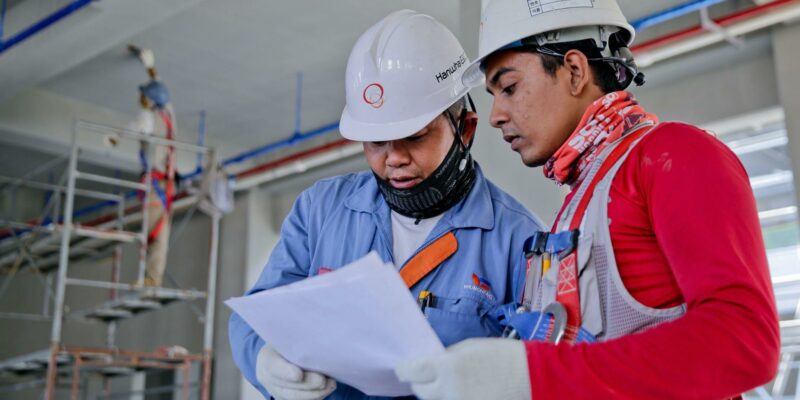Regardless of what kind of work you do or what kind of workplace you work in, there are hazards in your workplace that you should be aware of.
To avoid workplace injuries, it’s critical to be aware of potential hazards in your surroundings. Fortunately, most will be minor and easily treated; no one will die as a result of a paper cut. However, this does not mean they should be considered any less seriously.
Accidents not only change people’s lives, but they can also cost your company a lot of money in terms of time and compensation. Adequate safety procedures will never inhibit all accidents, but they will help mitigate risk factors, lowering incidences and potential damage.
This article will define workplace safety, who is responsible for keeping the workplace safe, and provide tips for keeping you and your workplace safe and secure at all times.
What is Workplace Safety?
All employees should actively participate in maintaining an organization’s workplace safety program to help make sure the workforce is secure.
A workplace safety program includes all of the processes, protocols, and guidelines aimed at mitigating risks and reducing injury and fatality rates on-site.
To help build a safer work environment, all employees must be fully involved and committed to these workplace safety guidelines.
When the workforce is committed to safety, various risks and hazards on-site can be easily spotted and corrective actions can be implemented.
1. Visual Aids and Messages Should be Displayed
To alert employees of potential hazards, use color codes, labels, posters, labels, and/or signs. Display OSHA posters in all workspaces as well as recreational places, and use other digital signage for sharing critical safety information, messages, and updates.
Employers, for instance, can use automated counters to exhibit their safety records. This visual aid shows real-time data and serves as a safety reminder to employees to stay safe.
In emergency situations, digital signage can be extremely useful since, unlike stationary posters, it can be used to instantaneously warn or notify workers of a scenario in places where computers and mobile phones are not permitted. It is especially important for a coworking space franchise, as all employees who share a workplace should be aware of these safety visual aids during emergency situations.
The employer/security officer can also use digital signage to post workplace safety posts daily or weekly, show appreciation to employees who have shown exceptional safety awareness, as well as keep employees informed of new guidelines and regulations.
2. Collaboration With Occupational Therapists
Occupational medicine clinicians can provide important insights into workplace injury and prevention. These clinicians can assist you in preventing workplace injuries by visiting your workplace and identifying high-risk areas for occupational accidents.
Physical and occupational therapists can also assist you in screening applicants for physically demanding roles and assist in the return-to-work process by improving workplace ergonomics and developing human performance evaluations.
3. Working on Live Electrical Wires Should Only Be Done by Qualified Personnel
Stay away from any live electrical wires. Only qualified individuals with appropriate training should work on live electrical wires.
Hazardous electrical equipment is subject to the same electrical safety precautions. Only qualified and authorized personnel should confront and manage any live electrical hazard.
If you come across a live electrical wire that is not being attended to, inform the relevant electrical safety personnel, who should immediately install physical safety barriers. Electrician Charleston SC can help you with any sort of electrical problems at your place in this regard.
4. Make Certain That All Employees Are Trained Properly
The organization must provide all employees with safety training in a tone they understand. This safety training should be given to all new employees, with revision classes given to current employees or when an employee changes his role/job within the organization.
By delivering safety courses in bite-sized portions, electronic message boards/kiosks can be used to reaffirm it.
5. Assure That Employees Have All the Necessary Tools and Equipment
Make sure that employees have got all the safety tools and equipment and use them properly. Also, ensure that these accessories are maintained properly. Having digital signage options in the workplace is an efficient tool for reinforcing injury prevention. Need to make sure the best electrical and power tools are used.
Create awareness about lock-out, tag-out, proper handling of hazardous material, as well as guarding machines. If the office design structure itself has some issues incorporating high-risk areas for occupational accidents, you might need to consider an overall office renovation too.
Furthermore, make certain that employees are always wearing the personal protective equipment (PPE) provided by the employer. Whether it’s as simple as earplugs or as complex as a chemical suit, personal protective equipment (PPE) exists for a reason. Wearing the appropriate PPE for the job is just one more way to keep yourself safe.
6. Report Hazardous Conditions
The only way to prevent unsafe conditions from occurring is to report them to administrators as soon as possible and contribute to the solution. Your security officer is legally obligated to provide a safe working environment for all employees and will address any unsafe conditions, but they must be aware of those conditions in order to do so.
To keep yourself and your colleagues safe, it is critical to report any unsafe condition or hazardous situation as soon as possible. Collaborate to find a solution to prevent the dangerous condition from recurring in the future.
7. Keep Emergency Exits Clear
Even if it’s only for a few minutes, never put anything in front of an emergency exit door. While this may seem obvious, it is surprising how many trolley carts, ladders, and even forklifts are placed in front of emergency exits.
Furthermore, make sure that paths to equipment emergency shutoffs are clear in case something needs to be turned off right away.
8. Take Regular Breaks
It is critical that employees take their scheduled breaks on a regular basis. They were put in place by OSHA for a reason – tired workers are the most likely to have an accident.
The more tired you are, the less aware you are of your surroundings, and the more likely you are to sustain an injury. Take regular breaks to keep yourself fresh, and try to arrange your more difficult tasks for the early stages of your shift when you’re most proactive.
Conclusion
Keeping your workplace safe from injury and incidents can be a never-ending task. Keeping your employees and contractors qualified in the most recent safety standards not only keeps you legally compliant but also helps to reduce the risk of accidents. A safer workplace is a win-win situation for all parties involved.
So, follow the steps mentioned in this article and ensure workplace safety for all!










Comments